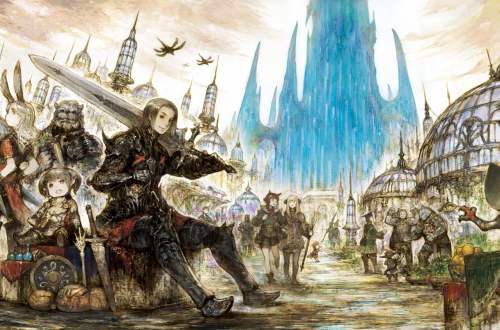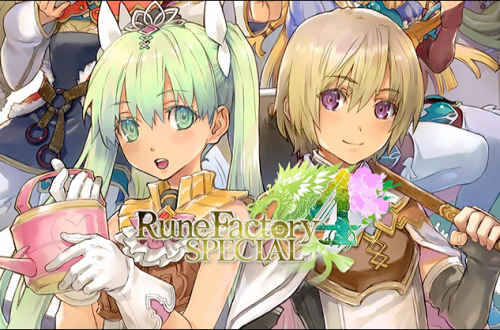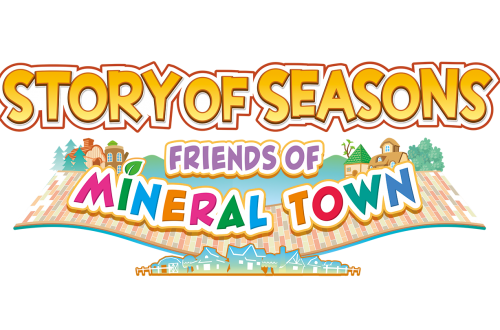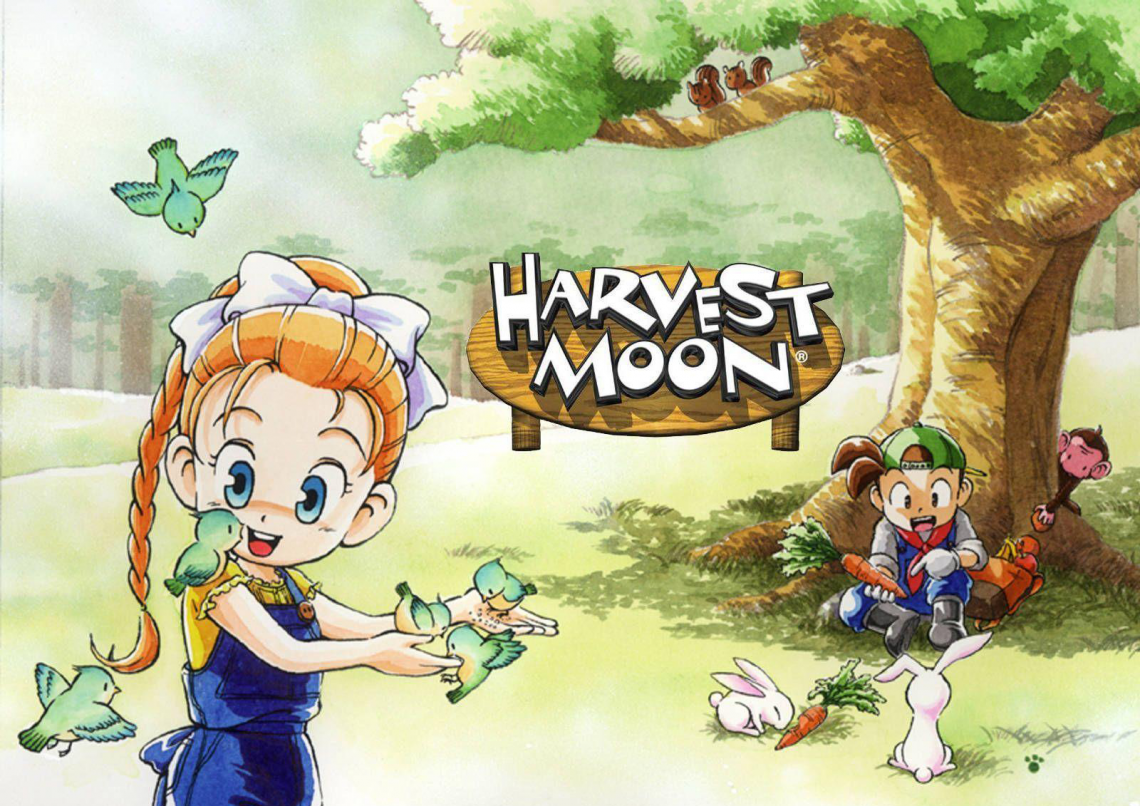
Harvest Moon Used To Be Really Amazing
The Harvest Moon video game series used to be one of my all-time favorites, and it was a series I found by accident. Way back in grade school, well before having my own source of income, the only way to really try new games was to borrow games from friends. I first heard of the Harvest Moon series from a friend who had a GameCube and she let me borrow her copy of Harvest Moon: A Wonderful Life, and after staying up and playing it all night throughout the school week and all throughout the weekend, I immediately knew I had to have it for myself. See, the cover art doesn’t actually tell you much. In fact, I think the only thing that really appealed to me was the character designs and the cute animals on the front.
But it didn’t stop there. I also picked up the girl version for the GameCube–Harvest Moon: Another Wonderful Life–and later when I got the GameBoy Advance SP in 2003, I also begged my grandma to pick up Harvest Moon: Friends of Mineral Town, and so on. She actually loved it as much as I did and would often ask me “What did you do on the farm today?” while we ate dinner at the dinner table. It was a lot of fun and it was a bonding experience that really resonated with me.
Nowadays, farming games are pretty popular (Stardew Valley I’m looking at you…) and for good reason. Most people realize that the Harvest Moon title has considerably gone downhill and that’s for many reasons. These days, Harvest Moon looks like a game you’d search for on the App store and scroll on the way down to the bottom and pick one of the very last search results, you know what I mean? Nothing good ever happens down there. How did it get this way? Well…
The very first Harvest Moon (the series is known as Bokujō Monogatari) game was released on the Nintendo SNES all the way back in 1996, and since then, there have been several releases, changes, translations, and even a new title. Harvest Moon is an agricultural simulation role-playing game that many people now know as Story of Seasons. The Harvest Moon games were originally created by Yasuhiro Wada and developed by Victor Interactive software, who would later be purchased by Marvelous Entertainment and they would continue making these games (after 2013) under the new title Story of Seasons. You can find a summary for the reason of the title change here.
RELATED: Harvest Moon Isn’t The Same Game You Grew Up With
Basically, Natsume was the publisher of the original Harvest Moon games and they held the original rights to the name “Harvest Moon”, and they’ve continued making their own games under this title. I’ve moved away from the Natsume Harvest Moon title because they’re severely lacking and sadly, the new Story of Seasons title has gone downhill rather quickly as well, with the exception of Story of Seasons: Trio of Towns, which I loved and I was really hoping the Story of Seasons: Pioneers of Olive Town release on the Nintendo Switch would stay true to my expectations, but sadly it crashed and burned following the Harvest Moon: Friends of Mineral Town remaster in 2020 that excluded several great features in the original game on the GameBoy. The series just hasn’t maintained the features I was introduced to and fell in love with as a kid.
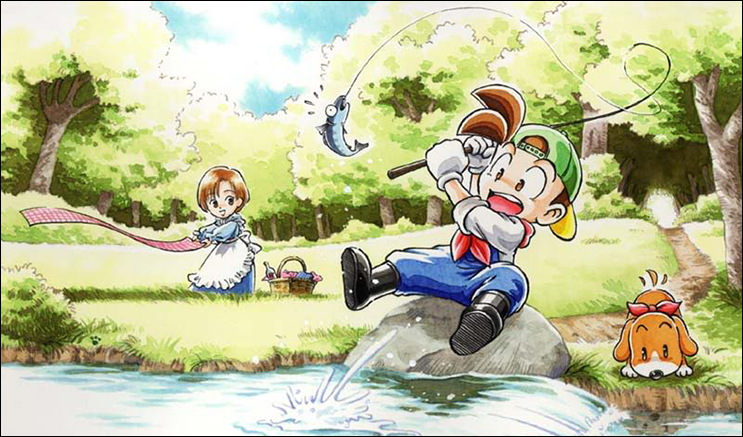
I want to take a look at some of my favorite Harvest Moon titles and explore what makes them so special in comparison to newer releases. Like with most Harvest Moon games, there are dozens and dozens of activities that you can do and dozens of characters to interact with all for the purpose of running a successful farm and leading a happy life.
Clearing off your field so that you can plant some crops is your first major task. Getting rid of the rocks and weeds is hard work and even a bit tedious at first, especially at the beginning of the game since you don’t have any items to restore stamina and you have to avoid passing out. This gets the game off to a pretty slow start and those with short attention spans will not feel satisfied with the experience, but I always enjoy this part the most.
After clearing your fields you get into the exciting task of raising crops. As a child, I had a really handy guidebook for A Wonderful Life that showed me the different crops that would grow each different seasons, how long they took to grow, and how much profit I would make for each crop depending on how much fertilizer I used and what the soil type was where I chose to plant the seeds. If the soil type wasn’t great, the crops would take longer to grow and their quality wouldn’t be as great unless I added fertilizer, and so on. Later on in the series, the difficulty increased with the introduction of different types of fertilizer, crop quality ratings, and crop quality requirements for winning the cooking festival and the harvest festivals.
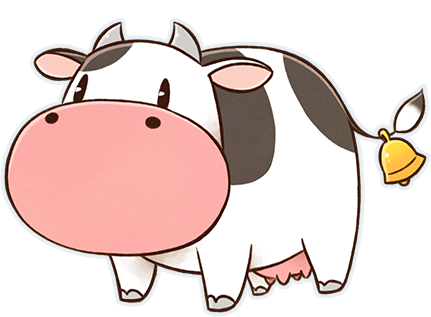
You’ve got to go through every motion just like a real farmer. This means buying the right seeds—hopefully one that will produce valuable crops in the shortest amount of time—tilling the land, planting the seeds and watering that stuff every single day. Eventually you could upgrade your tools like your watering can to hold more water, but that requires working in the mines, and in order to do that you need stamina. Do you see where this is going? This is the most basic activity in the game and one you’ll get used to very quickly. The tricky part is that you’re limited at first by your low budget equipment but the chores quickly stack up.
These tasks become obstacles however, when you remember the time crunch to marry the cute girl at the library, or when you remember the fishing rod you got from that one guy in town that’s been sitting in your inventory unused. You’ll have to find the time and energy to tend to your crop fields and brush your cows, talk to your cows, and milk them, too. Every. Single. Day. Balancing the daily tasks with the once-in-a-season or once a year events is the essence of the game. Quite often you won’t realize when or how you should’ve done something until it’s too late. Just make sure that you’re prepared next year.
Time is a tremendously important force in Harvest Moon because not only do you have a limited amount of time to accomplish your daily goals, but there are various time sensitive activities and events that can affect how close you come to your goals at the end of the game.
Harvest Moon 64
Harvest Moon 64 had both a Japanese and Western release in 1999 and was the fourth game to be released in the series, and by this point, it felt like the developers finally figured out what they wanted Harvest Moon to be. The first thing that really introduced me was the art style. It was cute, comfy, and you start the game just like most of the other games in the series: you inherit the farm from your grandfather and it’s your job to grow and maintain the farm while simultaneously wooing a villager and grow your family, each of whom has a rival in town that you have to compete against to win her affection.
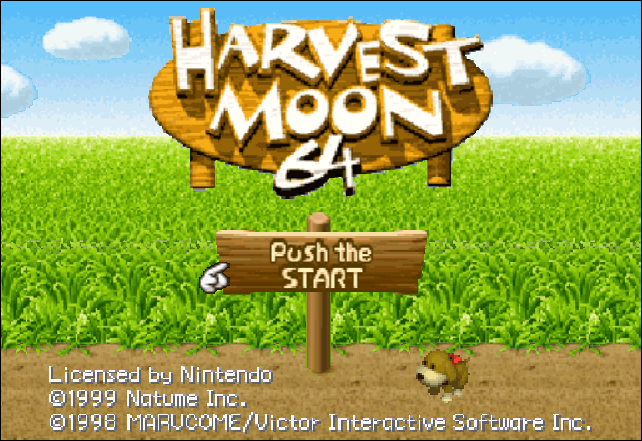
Overall, this game was really, really hard and punishing while also incredibly rewarding, depending upon how much time you sink into each day. After roughly a little more than two years, the player character’s father would return and gauge your progress leading to multiple different endings. Game days were fairly quick and perhaps that was the weakest part of the earlier releases, but that extra challenge and planning ahead to what I hoped to achieved that day made the game so much more fun for me.
There are five eligible bachelorettes in Harvest Moon 64. Each girl has a visible heart color that indicates their affection towards the player. You could pair the rivals up together or meticulously keep them separated to ensure you get to marry your bachelorette of choice. The festivals were a little sparse, but forgetting to attend one or two could hurt you down the line, depending especially on what ending you’re aiming towards. The time crunch was a reoccurring obstacle for the early Harvest Moon games, too. For example, in Harvest Moon: Back to Nature for the Playstation One, at the end of three years, the village will vote determine if you can stay, or if you need to pack your bags and move on. The game always ends after three years, the aim of the player is to grow crops, raise animals, get married and have children before the end of this period. There are twenty different possible endings in Back to Nature, each with their own special requirements.

I really enjoyed the time crunch in this game and it reminded me of the requirements for the end of year one in Harvest Moon: A Wonderful Life for the GameCube. If Harvest Moon 64 was your first Harvest Moon game, I feel like you may have had it a little easy, considering how A Wonderful Life ended at year one if you didn’t choose someone to marry!
Harvest Moon: Another Wonderful Life
This was the first Harvest Moon title on the GameCube (2003) and it was the very first Harvest Moon game I played. This game started my love affair for the series, and while I’d probably never finish playing the storyline ever again because it’s so dang sad, there are several features that I wish would make a comeback.
The title of this game is very misleading. You see, it’s more about A lot of characters die in this game, including the player character. There are six chapters total in this game and takes up about 10 years of gameplay which equals to 400 days. In this time span, villagers will die and livestock will also die of old age. As shocking as this feature was, it forced players to plan breeding their cows to ensure a steady income from byproducts. This feature isn’t perfect however.
In the Friends of Mineral Town remake (2020), livestock and coop animals can’t die, but by breeding them you can increase their affection limits. For example, a brand new chick purchased at the Poultry Farm will start at a maximum of three hearts. It won’t produce anything other than a small egg and it definitely won’t win the chicken festival for you unless you raise it’s maximum affection limit. How can you do that since its maximum affection limit is three? You have to place an egg that it lays in an incubator, and the chick hatched from that egg will have a maximum of four hearts, and so on.
I wish A Wonderful Life had this system in place but the animals in A Wonderful Life didn’t have an affection limit at all and their byproducts didn’t have a quality rating, so sometimes it seemed rather necessary to breed them even though it was cheaper. I wish Friends of Mineral Town did this better too. In both the original and the remake, you can only purchase dairy cows so you can’t breed them together but the quality system in place will encourage you to raise their affection levels to win festivals. Since the animals in the remake won’t die of old age, there’s really no reason to increase the byproduct quality. I just wish they had merged these two system together.
It can be pretty difficult making money on your farm, and one way to do it is manually placing fertilizer on your crops, one at a time, to increase the crop quality. There are no festivals though, which was a shame.
Harvest Moon: Magical Melody
Harvest Moon: Magical Melody was released on the GameCube (2005) and later the WiiU console. I absolutely loved the chibi-like art-style of this game, and I found myself playing it over and over again even though the game-span was really short. Your goal is to uncover magical notes to free a petrified Harvest Goddess, and that’s it. That’s all you’re really expected to do in this game. Once you’ve completed that task, you could do whatever you want.
You could choose one of three plots to place your farm house at the start of the game, all of which had different soil types that could make your early game really easy or really difficult depending on which one you choose, and I liked that you could befriend Mayor Thomas to purchase more plots of land and choose which plots of land to build farm buildings or use as crop fields. Villagers would move in and out of the town depending on the time of year and how long you go between interacting with them, which could impact how long it would take for you to get married to that certain someone. For example, the flower girl Lyla won’t move into your town unless you talk to her at the Flower Festival, Spring 23rd. If you don’t talk to her then, you’ll just have to wait again until the following year!
Harvest Moon: Friends of Mineral Town
Harvest Moon: Friends of Mineral Town (2003) was the first game that Marvelous made after they acquired Victor Interactive Software. Most of the characters in this game appeared in Harvest Moon 64 and Harvest Moon: Back to Nature along with their rival relationships. Honestly, if a new person to the series were to ask me “What Harvest Moon game should I play?” I would choose this one. It’s portable and it does a great job combining all of the good things about the Harvest Moon series. It’s also the easiest Harvest Moon game that beginners and advanced players can both enjoy.
If you’ve been paying attention, you’ll notice that A Wonderful Life on GameCube was released around the same time as this game, and there was a really unique connection system that offered several fun features if you connected Friends of Mineral Town and A Wonderful Life for the GameCube with a link cable.
You can choose to marry six different girls: Ann, Elli, the Harvest Goddess, Karen, Mary, or Popuri. But before you can get married in a Harvest Moon game, you have some requirements you have to meet such as building up your farm, upgrading your home, wooing the marriage candidate, and so on.
It’s actually a lot of work and it’s what makes marriage in Harvest Moon so much fun. In fact, in A Wonderful Life for the GameCube, if you don’t propose to one of the marriages candidates by the end of your first year, it’s game over. Friends of Mineral Town doesn’t have a strict timeline, but rival marriages helps to encourage players to get a head start (rival marriage was removed in the remake for the Nintendo Switch, however…).
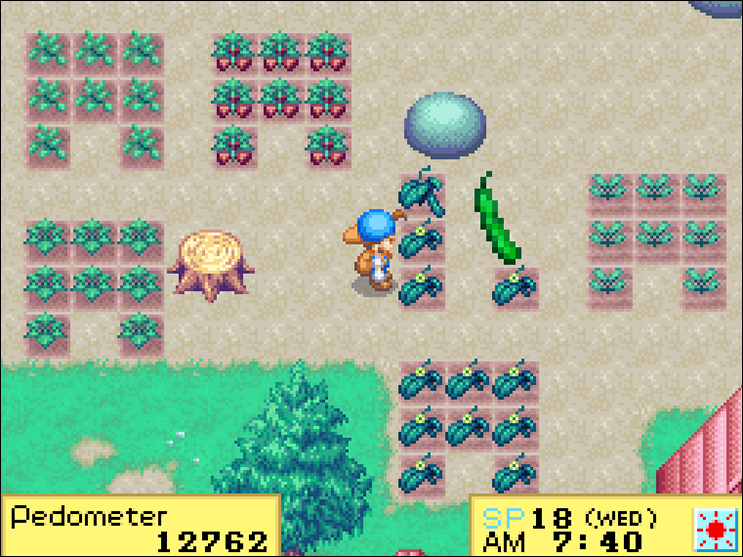
I first married Popuri thinking “haha take that Kai! You’ll never get to hang out with Popuri ever again!” but boy was little ‘ol me completely wrong about that. Kai leaves the house and still hangs out with Popuri, your marriage rival, at the beach. My next attempt was to marry Elli in the boy version, but I really took my time with it, and before I knew it the Doctor swept her off her feet at the end of year four before I had a chance to propose. Rival marriages can be unlocked over the course of four years in the game, and in the case of Elli and the Doctor, I accidentally triggered all of their heart events before realizing it.
The Harvest Goddess is a special candidate who doesn’t have a heart icon next to her name, so you have to give her gifts every day and take a guess for how much she likes you when you try to unlock her special heart events. The Goddess doesn’t have any rivals for her affection, but that doesn’t make it any easier. And after you’ve married her, she doesn’t live with you. Sounds pretty lame to go to all of the trouble to marry someone who won’t live with you, right? But I always thought that was the fun of it. If you’re curious about the marriage requirements for the Harvest Goddess in Friends if Mineral Town, Fogu has a well written guide here and it appears that the requirements are identical to the original Friends of Mineral Town.
Another thing I really loved about Friends of Mineral Town for the GameBoy was the never ending hunt for power berries—power berries essentially solved the problem of how quickly time passes in the game and running out of stamina quickly issue. Game days are fast, but when you find a power berry, you can improve your stamina and spend more time doing daily activities and chores throughout the day such as tending crops, spending time in the mines, and fishing. The more power berries you have, the more activities you can do throughout the day instead of turning into bed early and waiting for the next day to have your stamina pool refreshed. You could of course spend money on food at Doug’s Inn or cook for yourself if you’ve finished building your kitchen, but at the beginning of the game you don’t have the money or resources to do that, so more often times that not you’d find yourself running out of stamina or choosing between selling wild items you find int he mountains or eating them for stamina recovery. I enjoyed the accomplishment of finding a power berry and slowly getting stronger as the seasons progressed.
Also, since A Wonderful Life and Friends of Mineral Town released around the same time, you could connect the GameBoy to the GameCube to meet characters in A Wonderful Life, along with other cool unlocks in Friends of Mineral Town.
By the way, Friends of Mineral Town was remastered for the Nintendo Switch in 2020 and there were a lot of changes to the game that I don’t really agree with like the exclusion of rival marriages. You can read me griping about that more here. ? The original Friends of Mineral Town game contains four rival events that would result in the event couples getting married. These rival events trigger based on your love point level with the marriage candidate.
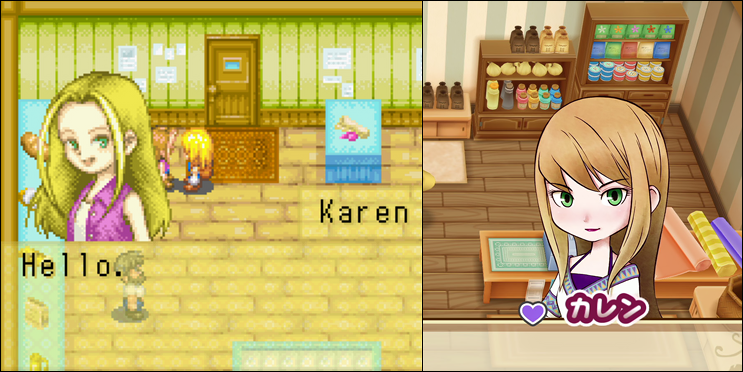
The criteria for triggering rival events were measured by the candidate’s lack of affection towards you as well as the current year in the game. Candidates needed to have a minimum heart level or a lower heart color for the rival event. Basically, these rival events were the opposite of romantic heart events and would trigger at low affection levels. If a candidate had a black heart color, all of that candidate’s rival events could trigger after completing the required number of in-game years.
For reasons that don’t make any sense to me, you can still watch the first two rival events for each candidate in the remaster, but nothing happens from there. The remake also removed the possibility of animal death, so it’s really easy to just not feed your animals if you don’t feel like it or if you’re too busy tending to crops or talking with the villagers—there really are no negative repercussions in this remaster. Festivals feel empty due to the lack of reward, and several players still complain about glitches that include your animals in the barn stacking on top of each other which makes it difficult to care for them.
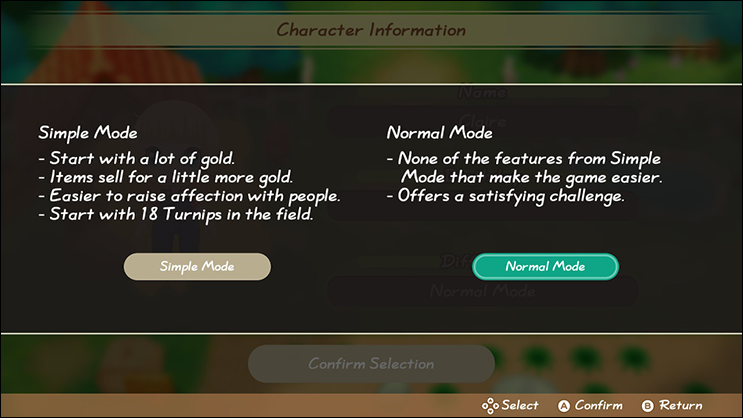
There are some nice additions to the remake like two different difficulty modes—simple mode (for beginners) and normal mode (for more experienced players).
Harvest Moon DS
At the present, I’m replaying my way through Harvest Moon DS on my Nintendo 3DS and I’ve rediscovering so many things about the Harvest Moon series that I really miss. Harvest Moon for the Nintendo DS was actually pretty difficult, and there were several marriage candidates in this series that required a special amount of effort and patience that brought an entirely new challenge to the Harvest Moon series besides cultivating a profitable farm and caring for your livestock and crops.
Harvest Moon: Friends of Mineral Town had one special marriage candidate, the Harvest Goddess (I think you can marry Kappa? Not sure.), and while the requirements were undoubtedly difficult, nothing compares to the requirements needed to marry the Harvest Goddess or the Witch Princess in the DS game. Holy crap this game is hard.
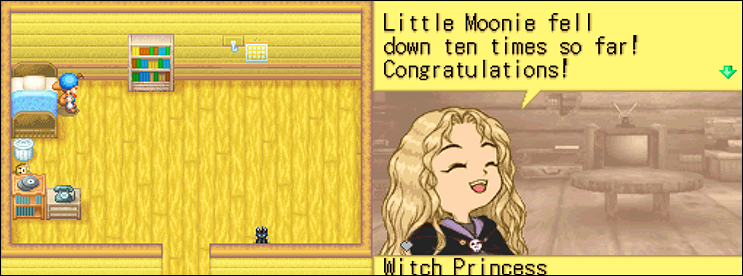
With that being said, besides the difficult marriage requirements and festivals being a pain in the neck, sometimes this game felt a repetitive and the character dialogue wasn’t too great either. Most of the time, you’d wake up and water the crops (or the sprites would do it for you) and you’d spend the day increasing the affection of your farm animals, befriending villagers, or spelunking in the mines until you passed out. Despite the repetition, there were a lot of additional things to do that required work like upgrading your home, upgrading the farm buildings, winning some festivals, and so on.
Oh, and there isn’t any way to increase your stamina in this game using power berries, so it depletes very quickly. It makes the grindy nature of this game even more apparent when you’re unable to complete your farm work every day due to lack of stamina and health. Of course, you could use up your own resources and cook for yourself, but why bother doing that? We don’t even have a stamina bar in this game or a cafe to purchase food to rejuvenate stamina.
There’s a bar in the town but since you don’t have a health bar, it can be difficult gauging how much stamina you regain (if at all) by knocking back a few drinks. I was surprised that this game was lacking a stamina bar and power berries, considering almost every other Harvest Moon DS game has them (well, the female version of this game Harvest Moon DS Cute doesn’t seem to have one either…).
If you were hurting for money, you can use the save/load trick in the mines and dig up jewelry to sell. Harvest Moon DS had a new crop ranking system that allows you to “level up” crops to increase profit, but by the time you unlock it you’ll probably have enough money to do whatever you want in the game anyway, and I would say that was the biggest drawback. While the challenging aspects of Harvest Moon were apparent, it lacked replay-ability.
Story of Seasons: Trio of Towns
The character dialogue in Story of Seasons: Trio of Towns was phenomenal, the multitude of festivals between the three towns really filled up your calendar, trying to woo your favorite character came with it’s own unique challenges, and both the animal byproducts and crops had their own individual star quality system (also holy crap there were over 40 different types of crops unique to every town in this game!) Marvelous got everything right in this game but this was the last game that kept me interested.
I can’t say for sure why Story of Seasons developers failed at Story of Seasons: Pioneers of Olive Town, but it was a hot mess in comparison to Trio of Towns on the 3DS.
Okay, I’m time skipping quite a bit here. The Nintendo DS had the bulk of really good Harvest Moon games (I forgot to mention Harvest Moon: Sunshine Islands) but this one really took the cake, in my opinion. At this point, the series fell off. The formula had gotten stale and the games began being hit or miss. Natsume split with Marvelous, and Marvelous was forced to come up with a new name for the series and that’s how Story of Seasons was born. If you look Story of Seasons up, you’ll immediately see the old Harvest Moon design and appeal. But nowadays, the name Harvest Moon isn’t necessarily fake, but it’s definitely nowhere close to what you might have in mind since Natsume took it over. Harvest Moon holds a lot of sentimental value for a lot of people, and it’s a shame that the Harvest Moon title has went downhill. Here’s a link to the Harvest Moon: One World trailer if you’re curious.


